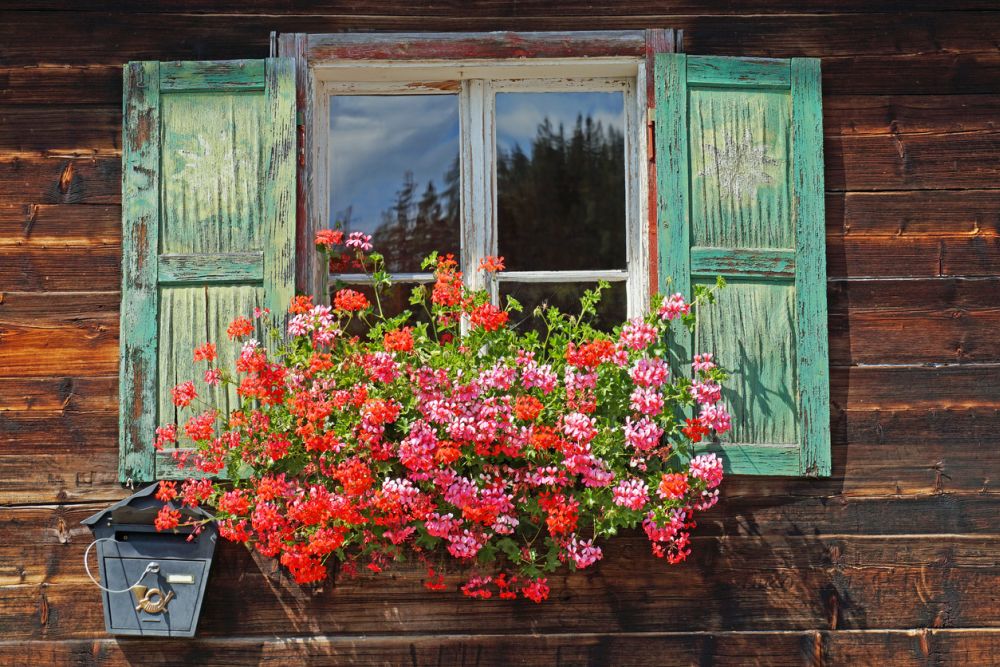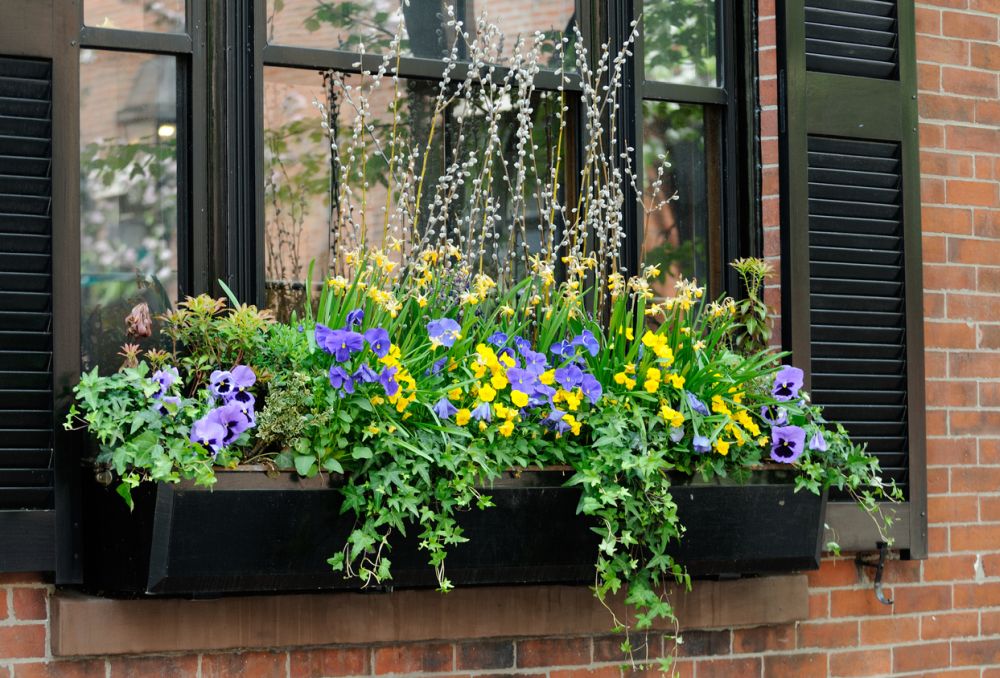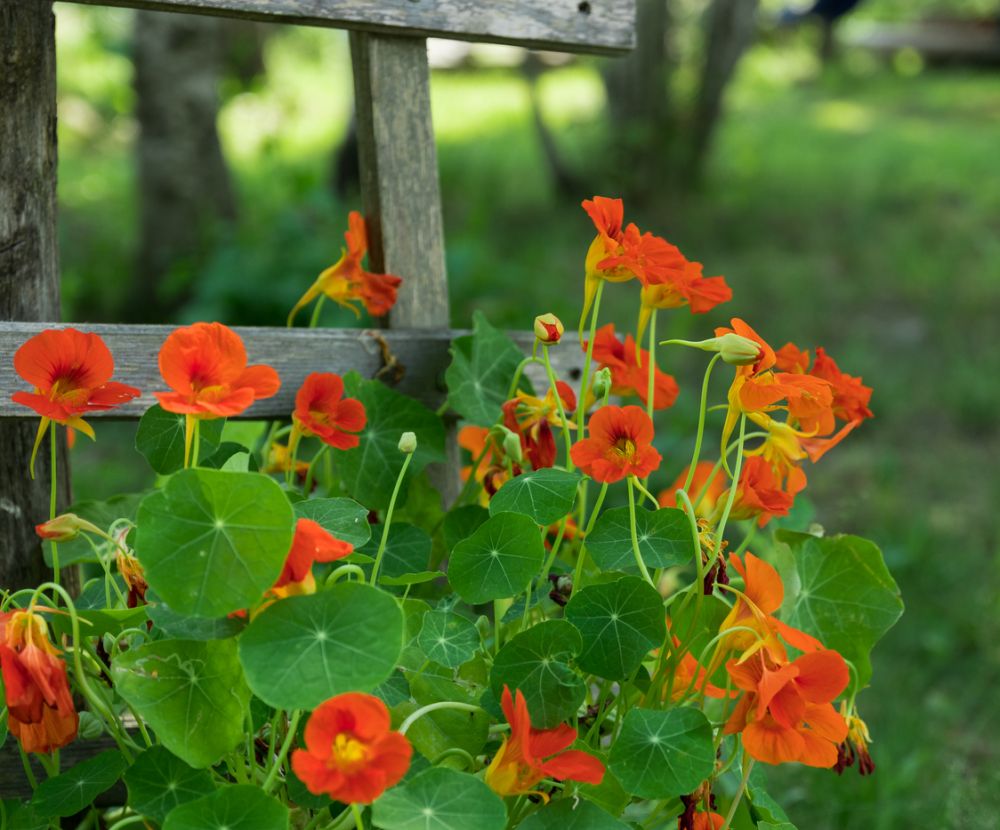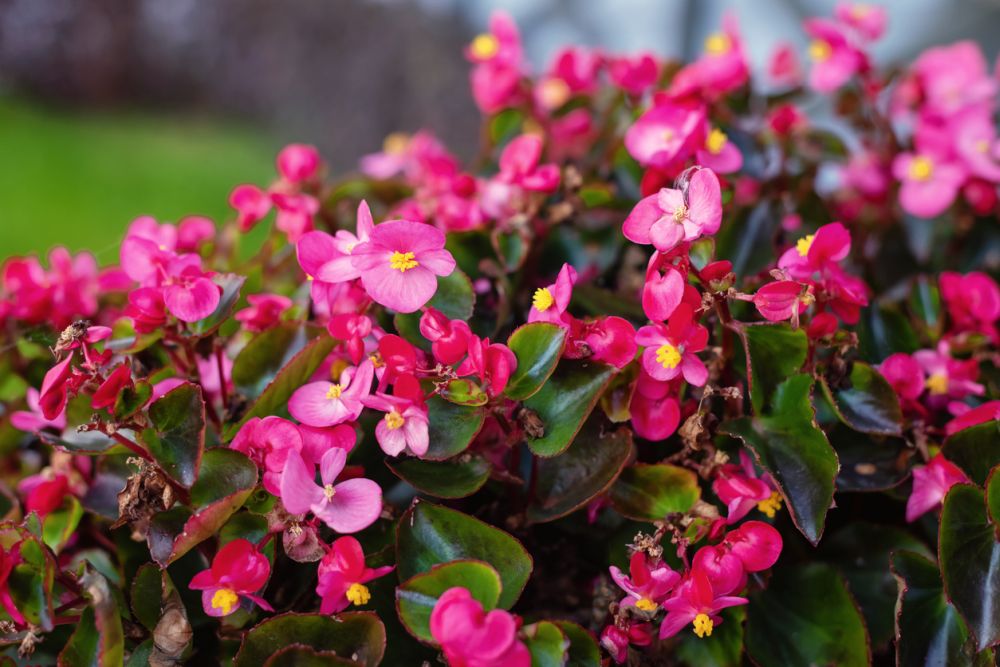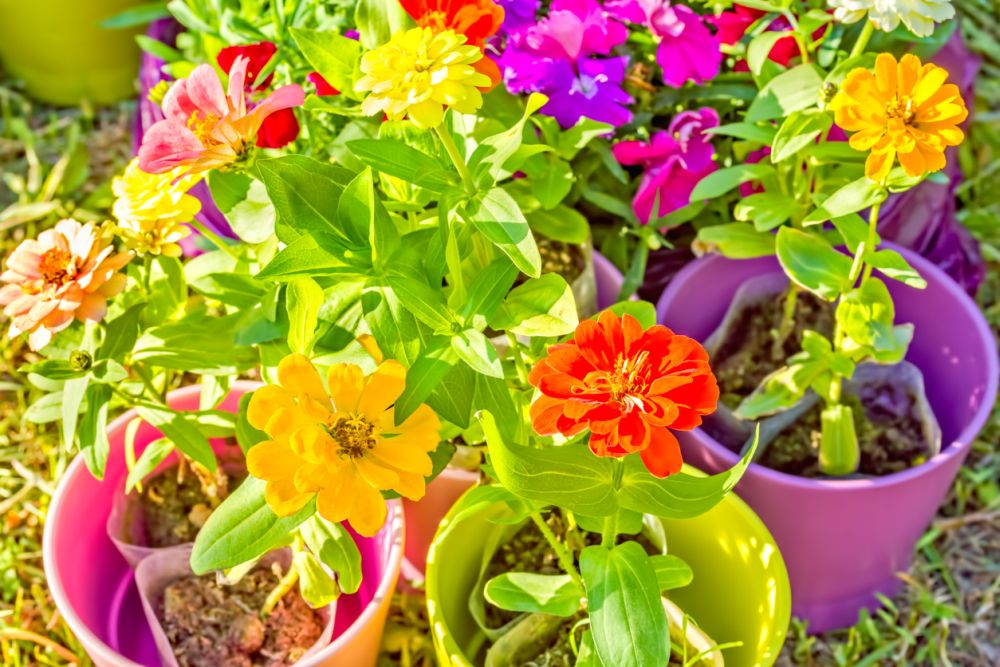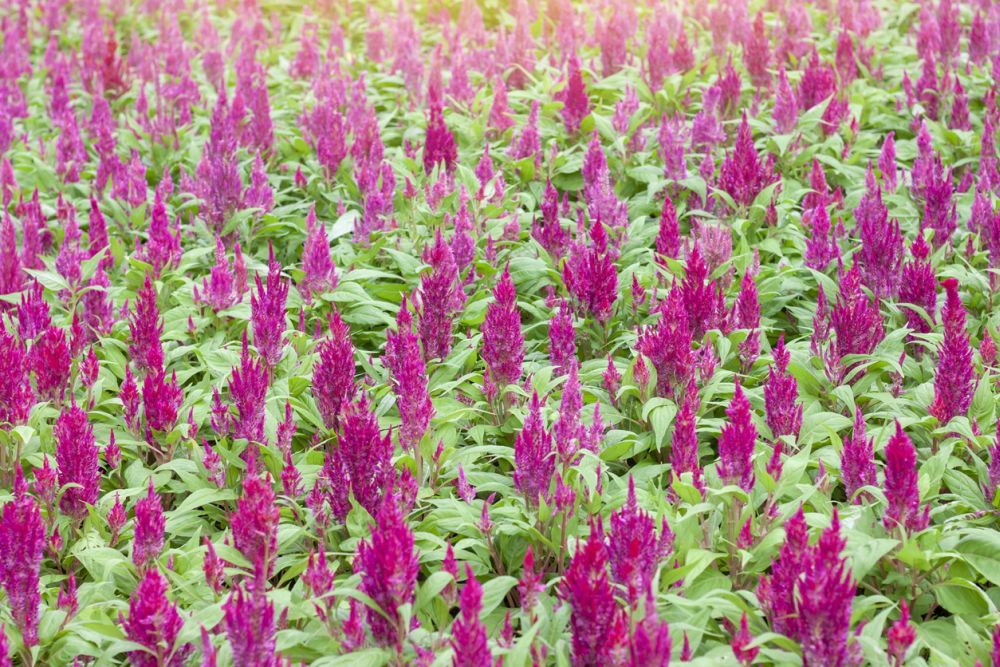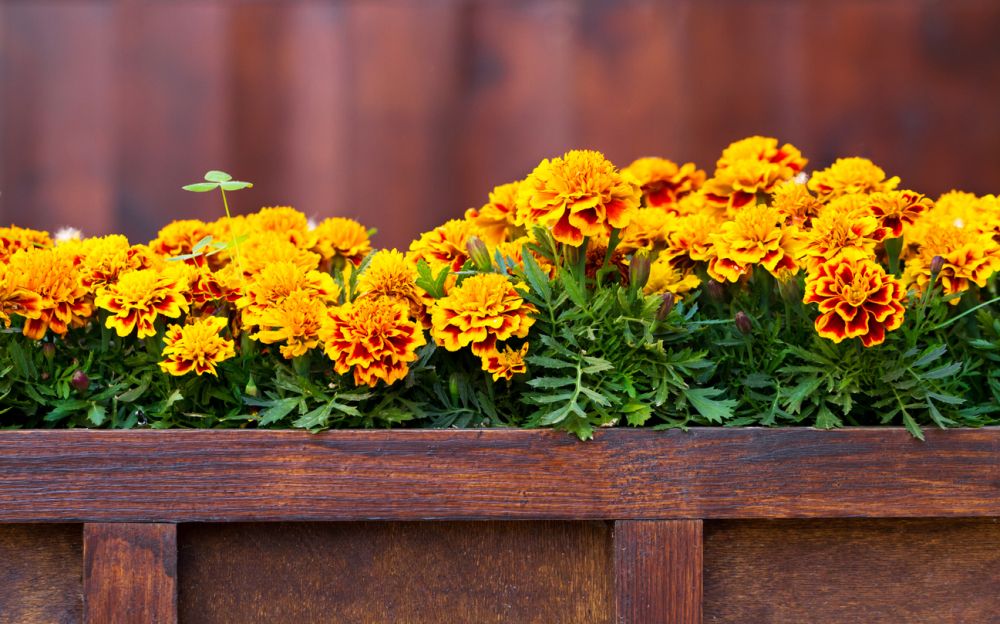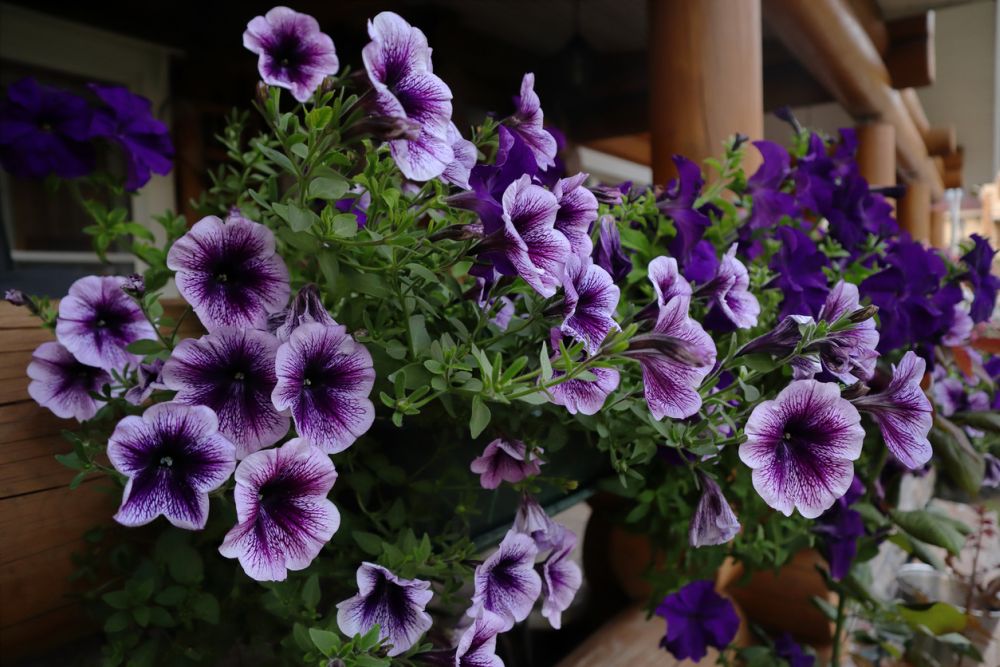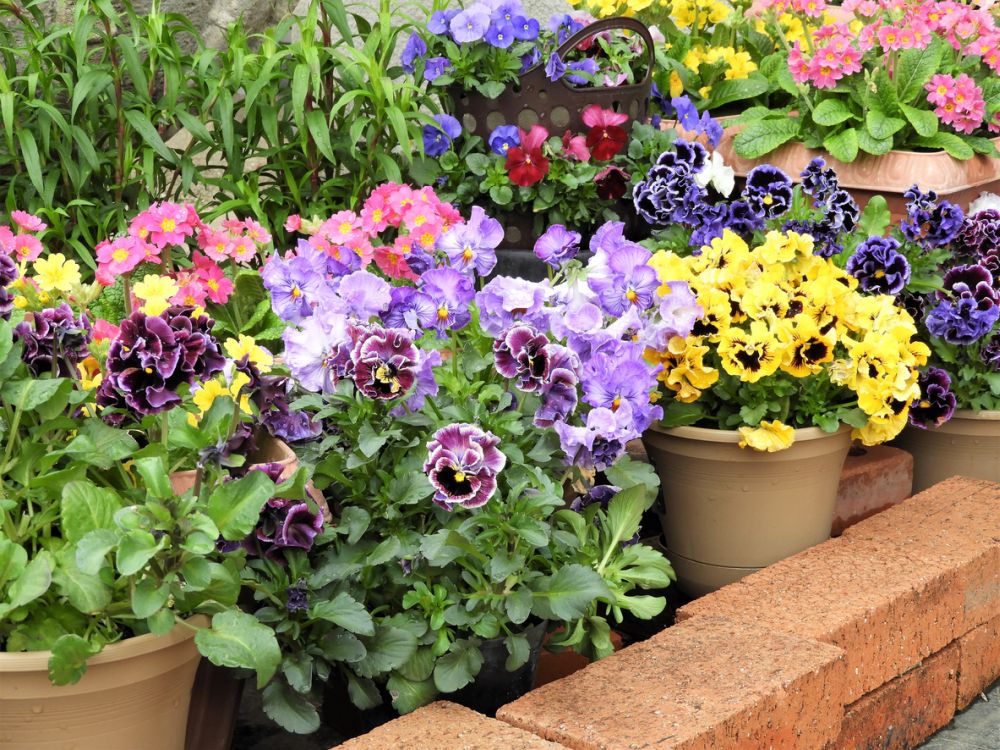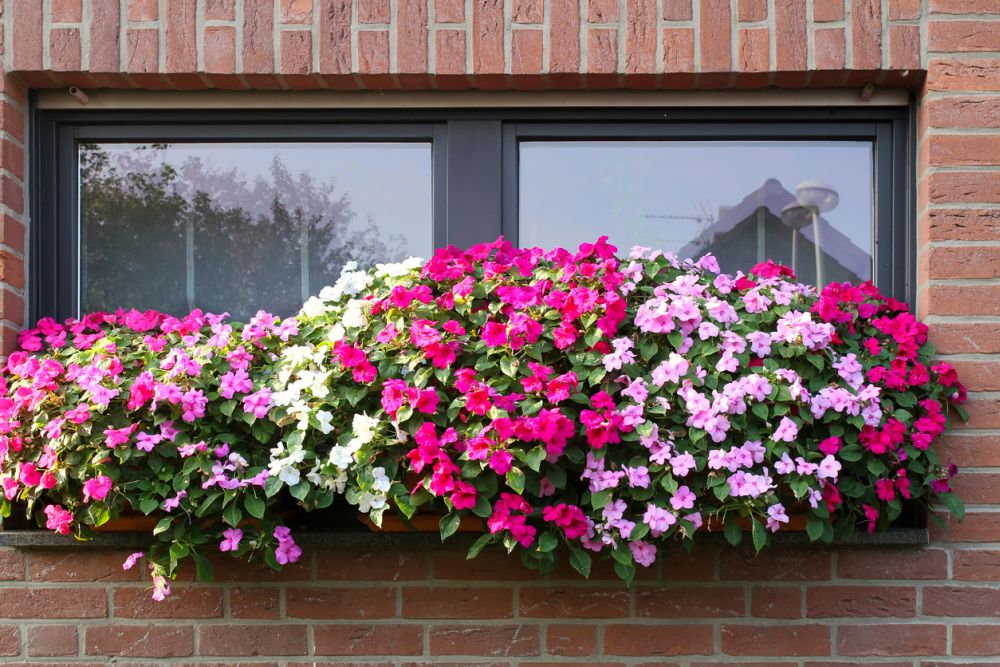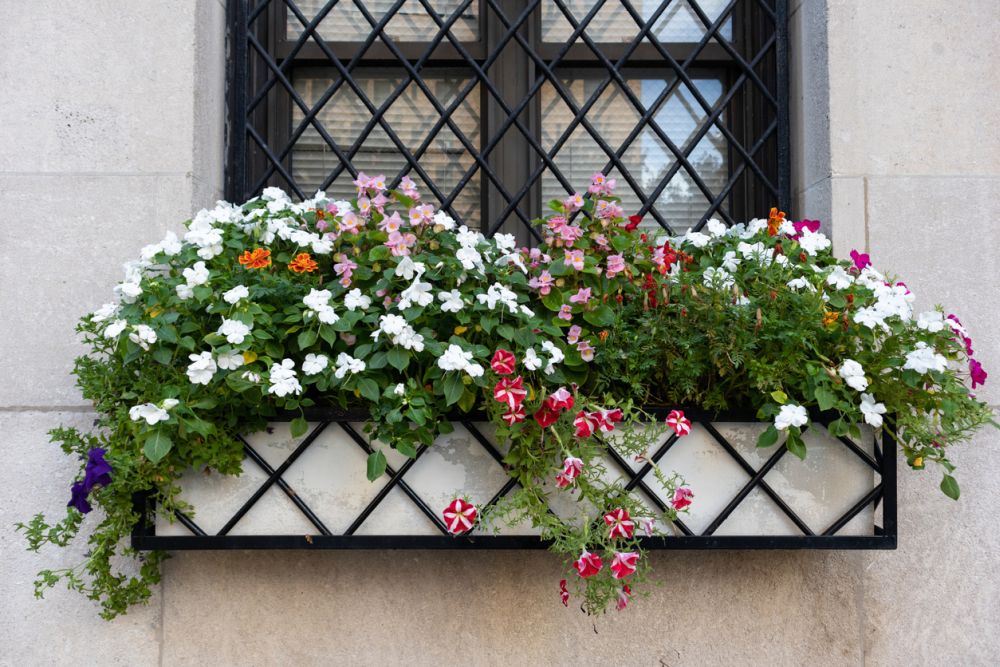10 Window Box Flowers for a Gorgeous Mini Garden Display
Window boxes allow you to grow various plants, from herbs and vegetables to stunning flowers that will brighten up your windowsill throughout the season. If you are wondering about what to display, read on to discover the best flowers for window boxes.
Window box flowers add a touch of beauty and charm to any home or apartment. These miniature gardens offer an opportunity to showcase your creativity and enhance the exterior of your living space. Whether you have a green thumb or are new to gardening, window box flowers are an accessible and rewarding way to bring color and life to your windowsills.
In this article, we explore the different types of plants that thrive in window boxes, the best flowers to plant in window boxes, tips for creating a stunning floral display, and suggestions for window box flower arrangements. Consult the FAQs section to learn more.
What types of flowers can I plant in window boxes?
There are five types of plants to grow in a window box: annuals, perennials, trailing plants, succulents, and herbs. This section describes each type and gives suitable examples for window boxes.
Annuals
Annual plants complete their life cycle in a single growing season, typically from seed to maturity, flowering, and seed production, all within one year. Examples of common annual plants for window boxes include marigolds, zinnias, petunias, impatiens, pansies, and celosia.
Annuals are the easiest type of flower to cultivate in a window box. They require little maintenance and can provide vibrant color throughout the growing season. However, you must replant them year after year from seed.
Perennials
Perennial plants live for over two years and survive multiple growing seasons. They typically grow from a root system that remains alive and sends up new growth each year, often with a period of dormancy during the winter months. Unlike annual plants, perennial plants continue to grow and produce new leaves, stems, and flowers each year, often becoming larger and more robust with time. As such, perennials planted in window boxes require low maintenance.
Examples of common perennial plants for window boxes include dwarf evergreens, such as dwarf Alberta spruce or boxwood, stonecrop (sedum), coral bells (heuchera), hostas, creeping jenny (lysimachia), geraniums, and daylilies.
Trailing plants
Trailing plants are plants with stems or leaves that grow horizontally or downward, often cascading over the edge of a container or hanging basket. They add texture, dimension, and visual interest to a window box.
Examples of trailing plants for window boxes include trailing petunias, sweet potato vine, English ivy, creeping jenny, trailing succulents like a string of pearls or burro’s tail, creeping phlox, and creeping thyme.
Succulents
Succulents are a group of plants that have adapted to survive in arid or semi-arid environments by storing water in their leaves, stems, or roots. They are known for their fleshy, often thick and waxy leaves, which give them a distinctive appearance. Succulents are fantastic choices for window boxes that receive sparse watering since they tolerate drought well.
Examples of succulents for window boxes include cacti, aloe, echeveria, jade plants, snake plants, and agave.
Herbs
Herbs are plants grown for culinary, medicinal, or aromatic purposes. Many herbs are well-suited for growing in a window garden because they don’t require a lot of space and can thrive in containers. Additionally, certain herbs like basil are natural repellants for pests such as mosquitoes.
Examples of herbs for window boxes include basil, parsley, thyme, rosemary, mint, chives, and cilantro.
What are the best flowers to plant in window boxes?
Some of the best flowers to plant in window boxes are Busy Lizzie (Impatiens), Coleus (Plectranthus scutellarioides), Pansy (Viola x wittrockiana), Petunia (Petunia x atkinsiana), Marigold (Tagetes), Celosia (Celosia), Zinnia (Zinnia elegans), Begonia (Begonia), Lavender (Lavandula), and Nasturtium (Tropaeolum). Discover more information about each of these flowers, including their hardiness zone, color varieties, sun exposure and soil requirements, bloom time, and what they attract.
1. Busy Lizzie (Impatiens)
- Hardiness zone: 10, 11
- Color varieties: White, orange, pink, red, purple, yellow
- Sun exposure: Part sun
- Soil: Slightly acidic (6.0 – 6.5 pH), well-drained, constantly moist, rich with organic material
- Bloom time: Summer, fall
- Attracts: Birds, bees, butterflies, hummingbirds
Busy Lizzies are a popular choice for window boxes due to their vibrant, colorful blooms and shade-loving nature. They are low-maintenance, grow 6-30 inches tall, and do not need much fertilization or pruning, making them a great option for novice gardeners. There are many impatiens varieties, including Bounce Violet, Spreading Shell Pink, and Bounce Pink Flame.
Impatiens are known for their ability to self-seed, meaning that they will often drop their own seeds and come back year after year without much effort from the gardener. This essential aspect makes them a great long-term investment for window boxes and other container gardens.
On the downside, impatiens are susceptible to downy mildew, a fungal disease that can cause the leaves to turn yellow and the plant to die off. To prevent this, it’s important to space out the plants in the window box to encourage good air circulation, avoid overhead watering, and remove any infected plants as soon as possible.
2. Coleus (Plectranthus scutellarioides)
- Hardiness zone: 10, 11
- Color varieties: Purple, pink, yellow, red, green, multicolor
- Sun exposure: Full to part sun
- Soil: Slightly acidic to neutral (6-7 pH), well-drained, rich organic matter, constantly moist but not waterlogged
- Bloom time: Summer
- Attracts: Bees, butterflies, and other pollinators
Coleus is a lovely choice for window boxes due to its colorful and unique foliage. Unlike most flowering plants, coleus is grown for its leaves rather than its blooms. The leaves often have interesting patterns and textures.
Coleus is a tropical plant that prefers warm temperatures and grows 1-3 feet high. It benefits from regular fertilization and pruning to encourage bushy growth and prevent legginess. It is possible to propagate this plant from cuttings, which is excellent for a long-term investment. When adding coleus to a window box, combine it with other flowering plants for a more traditional look, or use it on its own for a more modern and contemporary feel.
3. Pansy (Viola x wittrockiana)
- Hardiness zone: 2-9
- Color varieties: Blue, orange, pink, purple, red, white, yellow, multicolor
- Sun exposure: Full to part sun
- Soil: Acidic (5.4 – 5.0 pH), well-drained, rich organic matter
- Bloom time: All seasons
- Attracts: Butterflies, bees, moths
Pansies are one of the first flowers to bloom in the spring, so they will add color to your window boxes when other plants are still dormant. These plants are cold-tolerant and can survive a light frost, making them a good choice for early and late-season window boxes.
Pansies are relatively compact plants, spreading 9-12 inches and growing 6-9 inches tall, so they are a fine choice for smaller window boxes. A fun fact is that pansy flowers are edible and practical for coloring and flavoring salads, desserts, and other dishes.
4. Petunia (Petunia x atkinsiana)
- Hardiness zone: 9-11
- Color varieties: White, red, yellow, purple, blue, pink, orange, multicolor
- Sun exposure: Full sun
- Soil: Slightly acidic to neutral (6-7 pH), well-drained, light and sandy
- Bloom time: Spring, summer, fall
- Attracts: Bees, butterflies, hummingbirds
Petunias are beautiful flowers for window boxes since they produce abundant blooms and have a long blooming season, so you will be able to enjoy their bright colors from spring until fall. There are many petunia varieties, such as Limelight, Cascadias Rim Magenta, and Fortunia Early Blue Vein.
The petunia plant is low-maintenance and easy to grow, especially since it tolerates both heat and drought. It is versatile since it comes in a range of sizes and shapes, from compact to trailing varieties, making them suitable for a range of window box styles. Expect petunias to grow 6-18 inches high and 18 inches – 4 feet wide.
5. Marigold (Tagetes)
- Hardiness zone: 2-11
- Color varieties: Yellow, gold, orange, red, mahogany, bicolor
- Sun exposure: Full to part sun
- Soil: Neutral (6.2 – 6.5 pH), well-drained
- Bloom time: Spring, summer, fall
- Attracts: Butterflies
Marigolds are a popular choice for window boxes due to their bright, cheerful blooms and ease of care; they are relatively drought-tolerant once established. Deadheading (removing spent blooms) will encourage the plant to continue blooming throughout the season.
There are two main types of marigolds: French marigolds and African marigolds. French marigolds are smaller, usually growing to about 6-12 inches in height. African marigolds are larger, often growing to 1-3 feet tall. Although they are often used as border plants, African marigolds can also be planted in window boxes for a bold, eye-catching display.
6. Celosia (Celosia)
- Hardiness zone: 10, 11
- Color varieties: Orange, red, purple, white, yellow, pink, maroon
- Sun exposure: Full sun to partial shade
- Soil: Slightly acidic (6 – 6.5 pH), well-drained, rich organic matter
- Bloom time: Late summer, autumn
- Attracts: Bees, butterflies, and other pollinators
Celosia is a unique and striking choice for window boxes. It is a tropical plant grown for its unusual flower spikes, which resemble a rooster’s comb. The flowers can be found in single and double bloom varieties.
Caring for a window box with celosia is quite easy, as it requires little pruning and deadheading. The plant is drought-tolerant once established, but it benefits from regular watering during periods of dry weather. Regular fertilization encourages healthy growth and blooming.
One of the benefits of celosia is its long bloom time. The flowers last for several weeks or even months, providing a continuous source of color and interest in your window boxes.
7. Zinnia (Zinnia elegans)
- Hardiness zone: 3-10
- Color varieties: Orange, pink, purple, red, white, yellow, multicolor.
- Sun exposure: Full sun
- Soil: Acidic to alkaline (5.5-7.5 pH), well-drained, rich in organic matter
- Bloom time: Summer, fall
- Attracts: Butterflies, bees
Zinnias are excellent for window boxes since they provide a burst of color and attract pollinators to your garden. They come in various sizes, ranging from small, compact plants (6-12 inches) to tall, branching varieties (4 feet tall and 1-2 feet wide).
Zinnias are pretty easy to grow, need minimal maintenance, and tolerate dry conditions well. The long stems of zinnias make them ideal for cutting, and the blooms will continue to open and look beautiful in a window box for several days. There are many zinnia varieties, including Orange Sprite, Gold Braid, and Irish Eyes.
8. Begonia (Begonia)
- Hardiness zone: 8-11
- Color varieties: Pink, yellow, orange, red, white
- Sun exposure: Part sun
- Soil: Acidic (5.5 – 6.5 pH), well-drained, sandy loam, rich organic matter, moist but not waterlogged
- Bloom time: Early summer until frost
- Attracts: Butterflies, bees
Begonias are often used for window boxes due to their bright, colorful blooms and versatile size, from compact to trailing. They grow anywhere from 8 inches to 2 feet tall, depending on the cultivar. There are many begonia varieties, such as wax begonias, angel wing begonias, beef steak begonias, tuberous-rooted begonias, and rex begonias.
Begonias are also known for their ability to thrive in partial shade or filtered sunlight, which makes them well-suited for window boxes. On the other hand, they are sensitive to cold temperatures. If you live in an area with cool spring nights or early frosts in the fall, bring the window box indoors and cover it with a protective layer on colder nights.
9. Lavender (Lavandula)
- Hardiness zone: 5-9
- Color varieties: White, pink, blue-violet, various purple hues
- Sun exposure: Full
- Soil: Slightly acidic to alkaline (6.5 – 8 pH), well-drained, rich organic matter
- Bloom time: Summer
- Attracts: Bees, butterflies
Lavender is a favorite option for window boxes, thanks to its wonderful purple tones and soothing, relaxing fragrance that can reduce stress and anxiety. It is an excellent choice for busy urban settings.
The lavender plant tolerated drought well, so it is great for window boxes that may not receive regular watering. In fact, it is essential to avoid overwatering lavender, as it can be sensitive to root rot if the soil gets waterlogged.
Lavender is versatile since it comes in several varieties, from compact to tall, suitable for all window box styles. This small shrub grows 20-24 inches tall and wide. It is best to choose a deeper container of trim back the stems periodically to prevent them from becoming too leggy.
10. Nasturtium (Tropaeolum)
- Hardiness zone: 9-11
- Color varieties: Red, white, orange, yellow.
- Sun exposure: Full sun
- Soil: Slightly acidic to slightly alkaline (6.1 – 7.8 pH), well-drained, rich organic matter
- Bloom time: Summer, fall
- Attracts: Butterflies
Nasturtiums are a popular choice for window boxes due to their bright, cheerful blooms and easy-to-grow nature.
The nasturtium plant is easy to plant directly from seed and then to transplant into a window box once it starts growing. It is low maintenance and does not require fertilization. A unique feature of nasturtiums is that both the leaves and flowers are edible, with a slightly peppery taste that makes them a popular addition to salads and other dishes.
When planting nasturtiums in window boxes, it is important to keep in mind that they can spread quickly if given ample space to grow. It has a trailing habit and can spill over the edges of your window boxes, adding visual interest and dimension. To prevent overcrowding in your container garden, thin out the plants periodically or provide support for trailing stems.
How do I create the best window box flower arrangement?
Creating a beautiful window box flower arrangement requires planning. You must consider a few key factors, including the sunlight needs, height and texture, color scheme, soil, watering needs, fertilization, and maintenance. Here are some tips to help you create the best window box flower arrangement:
- Consider the sunlight needs: Select plants that will thrive in the amount of sunlight your window box receives. If your window box is in full sun, choose sun-loving plants such as petunias, geraniums, or marigolds. If your window box is in partial shade, choose shade-loving plants such as impatiens, begonias, or fuchsias.
- Consider height and texture: Mix plants of different heights and textures to create visual interest in your window box. Use taller plants such as snapdragons or salvia at the back of the box, and shorter plants such as lobelia or alyssum at the front. Mix in trailing plants such as ivy or creeping Jenny to soften the edges of the box.
- Choose a color scheme: Decide on a color scheme that complements your home and personal style. You can choose a monochromatic scheme, such as all pink or all white flowers, or a complementary scheme, such as purple and yellow or pink and green. Consider foliage plants like coleus or variegated ivy to add interest and texture.
- Use good quality soil: Use a high-quality, well-draining, and nutrient-rich soil mix. Fill your window box with soil within 1-2 inches of the top.
- Water regularly: Water your window box regularly to keep the soil moist but not waterlogged. You may need to water daily during hot weather or if your window box is in full sun.
- Fertilize: Fertilize your window box with a balanced, water-soluble fertilizer every two to four weeks during the growing season to encourage healthy growth and blooms.
- Maintain your window box: Remove dead or spent flowers regularly to encourage new growth and prolong the blooming season. Trim back leggy or overgrown plants to keep your window box looking neat and tidy.
Suggestions for window box flower arrangements
Check out these suggestions for making a window box flower arrangement, depending on the preferred style:
- Classic summer flowers: Create a classic summer look with bright, colorful flowers such as petunias, geraniums, and marigolds. Add trailing plants like ivy or sweet potato vine for a cascading effect.
- Cottage garden style: Create a charming cottage garden feel with a mix of pastel-colored flowers such as daisies, snapdragons, and delphiniums. Add greenery like ferns or hostas for a natural look.
- Edible window box: Plant a window box with a mix of colorful flowers and edible herbs such as basil, parsley, and thyme. You will have fresh herbs on hand for cooking and a pretty window box to enjoy.
- Monochromatic: Create a monochromatic look with a single color, such as all-pink or all-white flowers. A monochromatic look is cohesive, elegant, and striking against a contrasting background.
- Tropicana style: Create a lush, tropical look with bright, bold flowers such as hibiscus, bird of paradise, and bougainvillea. Add foliage plants like palms or ferns for a truly exotic feel.
- Succulent garden: Create a low-maintenance window box garden with a mix of colorful succulents such as echeveria, sedum, and crassula. These drought-tolerant plants are perfect for hot, sunny windows.
- Shade garden: Create a cool, shady retreat with shade-loving plants such as impatiens, ferns, and hostas. Add texture with variegated foliage or trailing plants like ivy.
FAQs
Discover more helpful information about growing flowers in window boxes.
How deep should a window box be for flowers?
The depth of a window box for flowers should be at least 6-8 inches. It provides enough space for the roots to grow and allows proper drainage. However, larger plants or ones with deeper root systems, such as tomatoes or herbs, need a 10-12 inch deep window box.
How do I prevent pests from damaging my plants in a window box?
Regularly inspecting your plants for signs of pests or disease is key. Consider using natural pest control methods such as companion planting or introducing beneficial insects like ladybugs or lacewings.
How do you keep a window box watered when away?
There are a few ways to ensure your window box flowers receive enough watering while you are away. For example, install a self-watering system in your window box. It typically consists of a reservoir that holds water and a wicking mechanism that draws the water up into the soil as needed. Another option is to use moisture-retaining potting soil or add mulch around the base of your plants to help retain moisture for longer periods of time.
Can you leave plants in pots in window boxes?
Yes, you can leave plants in pots in window boxes. It is a great solution for showcasing flowers with different soil needs, easily swapping flowers to update the display, bringing them indoors during the color season, and preventing plants from competing for resources when sharing the potting mix.
Can I plant vegetables in my window box?
Yes. Many vegetables, such as cherry tomatoes and lettuce, can be grown successfully in a window box. Choose varieties suited for container gardening. Examples include cherry or patio tomatoes, sweet or hot peppers, short carrot, round radish, leaf or butterhead lettuce, baby leaf spinach, dwarf or curly kale, bush or dwarf cucumbers, patio eggplant, and bush or dwarf beans.
Conclusion
There are many beautiful flowers suitable for window box display. By following the tips and tricks outlined in this article, and with a bit of creativity and planning, you will create a beautiful window box that will brighten up your home and neighborhood. Check out these creative ideas for DIY window flower boxes.
